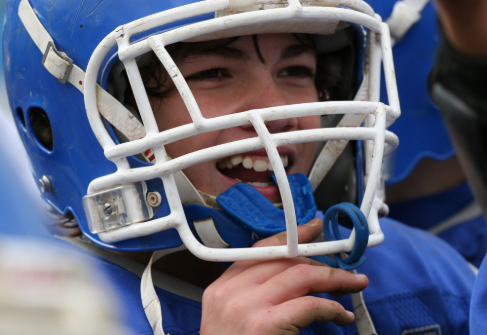
Picture this: Your kid is sprinting down the field, eyes locked on the goal, adrenaline pumping. Then – bam! – they take an unexpected hit. Sports are unpredictable, but one thing shouldn’t be – your child’s smile staying intact. That’s where a good mouth guard comes in.
Why Mouth Guards Matter
The American Dental Association (ADA) reports that athletes without mouth guards are 60 times more likely to suffer dental injuries. That’s not just a cracked tooth – it could mean knocked-out teeth, jaw fractures or costly dental work. And let’s be real, no parent wants to deal with an emergency dental visit after a Saturday soccer game.
Who Needs One?
If your child plays a contact sport, a mouth guard should be as essential as their cleats. Football, basketball, hockey, lacrosse and even gymnastics comes with risks. Solo sports, such as skateboarding and biking, can also lead to some serious faceplants, also putting them at risk.
Types of Mouth Guards
1. Stock Mouth Guards: Found in sporting goods stores. Cheap, but not a great fit. Think of them like dollar-store sunglasses – okay when you’re in a pinch, but not very effective.
2. Boil-and-Bite Mouth Guards: A step up. You soften them in hot water then mold them to your child’s teeth. A better fit, but still not perfect
3. Custom Mouth Guards: Made by a dentist to fit your child’s mouth precisely. The best protection, comfort and durability
Taking Care of a Mouth Guard
A mouth guard that’s chewed up and covered in last week’s Gatorade residue isn’t doing its job. Here is how to keep it clean:
- Rinse it with cold water after each use
- Store in a ventilated case
- Clean it regularly with a mild soap and toothbrush
- Keep it out of extreme heat (like a hot car)
Final Thoughts
Sports build character, teamwork, and resilience, but they don’t have to come at the cost of a perfect smile. A well-fitted mouth guard is a game-changer. Your kid plays hard. Let’s keep their teeth in the game, too.

